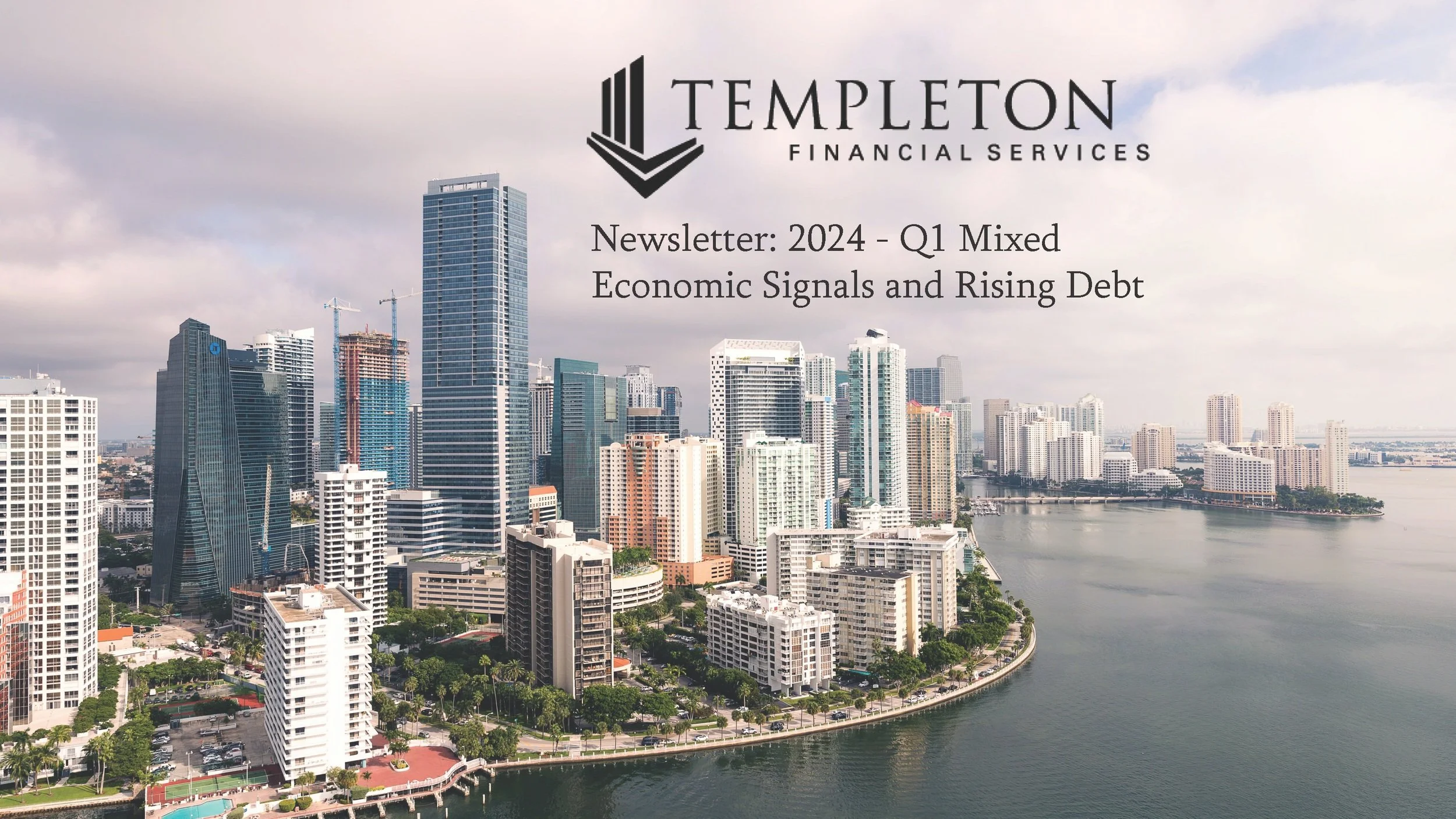Publications
Our publications serve to inform advisors, clients, and industry influencers about timely issues facing the investment community. With the goal of providing access to insightful content, we regularly share our perspectives in two ways: newsletters and articles.
Newsletters
With the transition from the Biden administration to President Trump’s leadership, 2025 has already seen significant economic and geopolitical realignments. The U.S. dollar has gained strength as markets react to the administration’s protectionist stance, including proposed tariffs of 25% on Canadian and Mexican imports and 10% on Chinese goods. While much remains uncertain as these policies undergo scrutiny, one thing is evident: Trump’s presidency is already reshaping global expectations.
The 10-Year Treasury yield has diverged from historical patterns during the Federal Reserve’s current rate-cutting cycle. Notably, this marks the first instance in 30 years (1994) where the 10-Year yield has increased immediately following rate cuts.
The FOMC continues to watch the economic data come in and so do we. There are factors that could make yields fall: higher unemployment, an increase in defaults, or an economic slowdown. There are also factors that could make yields rise: persistent inflation from re-shoring or higher tariffs, liquidity problems, or deficit funding issues. The consumer makes up about 70% of GDP and seems to be increasingly leveraged. Our federal government deficit also continues to grow…
While the 19 members of the FOMC are split on how many cuts we will see this year, we are firmly in the ‘2 or less camp’ while the economy remains strong. With a potential higher neutral rate and inverted yield curve, we believe an intermediate barbell strategy is best for Municipal Bond investors right now. With potential economic uncertainty ahead, we continue to believe municipalities are an attractive asset class providing stable cash flows and favorable tax treatment.
Throughout all of this, the unemployment rate fell from 4% to 3.7%. The economy has remained strong and the consumer has remained resilient, allowing the Fed to have a single mandate in combatting inflation. While debates rage on about how many cuts we will see in 2024, we continue to monitor the unemployment rate carefully as this will be one of the strongest influencers of how 2024 continues.
The massive amount of stimulus coupled with the break-neck pace of tightening leads to many questions about the strength of the economy and the consumer. While we are now in a waiting period with long and variable lags, we believe we are at or near peak rates.
The overall economy stabilized after the collapses and buy-outs of multiple banks including SVB and First Republic. While yields have risen, the pace of rate increases has slowed. Hopeful that they are winning the battle against inflation, we may be entering a new season of higher yields with a data-dependent Federal Reserve.
The Federal Reserve has a dual mandate of maximum employment and stable prices. As of this writing, unemployment sits at a historic low of 3.4%. With unemployment at these levels, it has allowed the Fed to focus solely on their fight against inflation.
\
While we believe peak inflation is in, we also believe we have a long road ahead of us. The latest CPI and PPI reports were hotter than expected and the Nonfarm Payrolls MoM was almost 3 times stronger than expected. The robust fiscal and monetary response to the pandemic has kept the consumer and economy strong, but we will highlight multiple things in this newsletter that point to a potential slowdown ahead.
Rates continue to rise, quantitative tightening has been running for 4 months, and CPI is remaining around 8% YoY. While consumers and investors hope that inflation is easing, the FOMC continues to point to more rate hikes in December and beyond depending on the data. All these factors have weighed heavily on markets in 2022.
The Federal Reserve is fighting inflation and the economy has begun slowing down. Rates rose significantly in the first 1/2 of the year creating a buying opportunity for individual tax-free bonds because of so much forced selling in muni bond funds.
The 10-year Treasury yield rose from 1.66% to 2.90% - a rise of 75% since the beginning of the year. The 10-Year yield has doubled since December 2nd. The Consumer Price Index (CPI) is running at 8.5%, the Personal Consumption Expenditure Deflator (PCE) is 5.3%. Both are at the highest readings since the early 1980’s. Where are we headed from here?
Now that inflation has been running hot for a year, the Fed is talking about increasing the Fed Funds rate and reducing it’s Balance Sheet in an effort to get inflation under control…
Fixed income sought direction in the third quarter as investors absorbed news regarding potential tapering, continued stimulus, the debt ceiling, and an ever present debate regarding the magnitude and duration of inflationary forces.
Fixed income found its footing in the second quarter with many sectors turning positive for the first time this year.
Interest rates climbed in the first quarter as markets weighed a strengthening economy, potential inflation, and continued large scale monetary and fiscal support.
Even though treasury yields moved higher during the final quarter of 2020, annual fixed income returns remained strong across a broad spectrum of sectors and credit quality.
Articles
The New York Times recently asked Len Templeton about our opinion on MTA bonds. Please read the article to hear our thoughts on this credit.



















